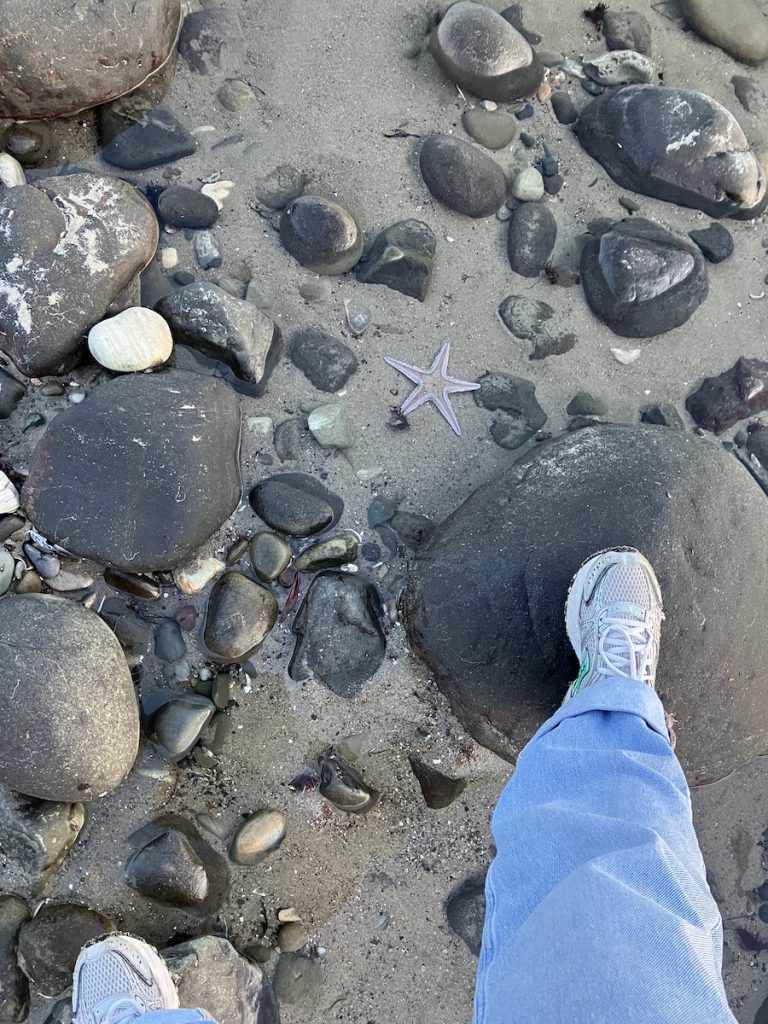Miramar After the Storm
Dear Montecito,
I took a walk on Miramar Beach on January 6, about 20 hours after the first of the storm system had left our local area.

Now in general I find writing about the beach to be a tricky thing. Perhaps because it is well-worn territory or simply too easy to become sentimental. Perhaps it is because I wrote one truly atrocious piece of free verse in high school that talked about how beautiful the tide is, and I learned my lesson. Or perhaps I haven’t learned anything because here we are and I am about to talk about the beach.
I am compelled to write about this today in part because of the conversations I have been having recently. As I interview people for the upcoming issues of this column, certain themes are being dredged up. In the next few months, you can look forward to interviews about the human impact on marine mammal welfare, the zero-waste culture at UCSB, and the intersection between society and climate change. These conversations were still fresh for me as I walked Miramar. And as I did, what struck me about these conversations and the aftermath of the storm is that a beach is a good place to go to see how far our Anthropocene
border stretches.
During a storm, violent winds till the marine environment for human artifacts. As the storm runs its course, these artifacts are spit up onto the beach. Things we left on purpose come back first: lobster traps and sea-faring-vessels-no-more. The things we left negligently come back later: the bottle caps, frisbees, sunscreen tops, snorkel masks, flip-flop straps, and broken glass. It’s hard to say when certain items return if we never know how they came to be dumped in the ocean at all: golf balls, shoe soles, toy swords, and car tires. What is certain is that this is not a one-way transaction. For every split tennis ball, the storm gives us a crab leg or a broken mussel shell.
In fact, Miramar Beach was littered with sea life. My cousins, my mother, and I walked the beach at low tide, a time of day that exaggerated the already confused landscape. From smooth pebbles to man-sized boulders, all were dispersed over the normally level beach surface. In between the rocks and streamers of kelp we could see clams dead and decompressed, sea anemone colonies, and crumbs of lobster. I had to call my mother over to help me identify one find, oblong and yellow, who had escaped the worst of the storm and was tucked safely in his tidepool. “A sea squirt,” she said. Meanwhile, the sea stars were not as lucky as the squirt, and several needed relocating. And while the moon snails seemed to fare okay, their typically bloated morphology made it hard to tell.
Once, a biology professor of mine said that sea life fares better on land than land life fares at sea. I thought about this as I picked up a piece of sea kelp. The kelp garland’s holdfast, its anchor, had bonded to a red brick and had presumably been living well for some time as the brick was now eroded and porous. This specimen was a special combination example; one of those pieces of evidence at the intersection between human life and marine life.
It was still low tide when we walked back. On our way we passed other beach walkers, dogs, a small group of men getting ready to paddle out. We passed the lobster traps, the car tire, and the sea squirt. We passed a piece of plastic that looked like a jellyfish. We passed a group of kids and their sand castles. And finally we walked home.
Yours,
Stella







